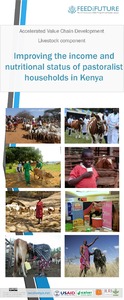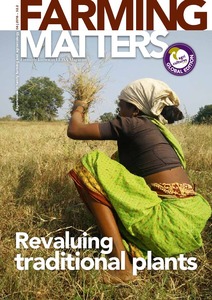Soil organic carbon stocks in semi-arid West African drylands: implications for climate change adaptation and mitigation
In the West African drylands, SOC sequestration is seen as one of the prominent strategies to both enhance the resilience of agro-ecosystems and mitigate global greenhouse effects. However, there is a dearth of baseline data that impede the design of site-appropriate recommended management practices (RMPs) to improve and sustain SOC accrual.
Action contre la desertification: Déployer la grande muraille verte d'Afrique. Bannière I
En 2016, Action contre la désertification se prépare à restaurer 10 000 hectares de terres et à planter des espèces d'arbres, d'arbustes et de graminées locales et bien adaptées localement dans six pays africains - le Burkina Faso, l'Éthiopie, la Gambie, le Niger, le Nigeria et le Sénégal.
Action contre la desertification: Déployer la grande muraille verte d'Afrique. Bannière II
En 2016, Action contre la désertification se prépare à restaurer 10 000 hectares de terres et à planter des espèces d'arbres, d'arbustes et de graminées locales et bien adaptées localement dans six pays africains - le Burkina Faso, l'Éthiopie, la Gambie, le Niger, le Nigeria et le Sénégal.
Agro(Eco)System Services—Supply and Demand from Fields to Society
Land use—with a special focus on agriculture—is increasingly influenced by globalization and external driving forces, causing farmers to seek opportunities to develop efficient, large-scale production systems.[...]
Sustainable agricultural development for food security and nutrition: What roles for livestock? A report by the High Level Panel of Experts on Food Security and Nutrition of the Committee on World Food Security
This report addresses the economic, environmental and social dimensions of agricultural development, with the objective of ensuring food and nutrition security, in terms of availability, access, utilization and stability.
TOPIC GUIDE: Governance of Natural Resources
This topic guide for government agencies, service providers and other practitioners examines various dimensions of governance that are key to deliver appropriate benefit-sharing, ensure sustainable exploitation, minimise conflict over access and control, and maximise the contribution of resources to economies.
Assessment of beef cattle production, management practices and marketing system in Lume District of east Shoa Zone, Ethiopia
Study was conducted to assess beef cattle production, management practices and marketing system in Lume district, East Shoa Zone, Oromia. Traditional, semi-intensive and intensive beef cattle production and marketing system were considered for the study.
Assessment of fattening and marketing system, and effect of concentrate supplementation with locally available feeds on fattening performance of indigenous cattle in Bonke Woreda of Gamo Gofa Zone
The study was carried out in Bonke Woreda of Gamo Gofa Zone, southern Ethiopia, with the objectives of assessment of fattening and marketing system, and effect of concentrate supplementation with locally available feeds on fattening performance of indigenous cattle.
Evaluation of the agronomic, utilization, nutritive and feeding value of desho grass (Pennisetum pedicellatum)
This study comprised of field survey, agronomic trial, laboratory and animal evaluation of desho grass. A total of 240 households (hh) were involved in the field survey conducted to assess the status of desho grass production and utilization in Burie Zuria and Doyogena districts, with the use of pre-tested and semi- structured questionnaire.
Factors influencing natural resource management in pastoral systems: Case of Tana River County, Kenya
Making millets matter in Madhya Pradesh
A decline in minor millet cultivation rings true across much of India. Yet a country wide revival of this cereal crop is in motion. Farmers are again recognising and asserting the value of minor millets, a cereal crop that was once central to their culture.










